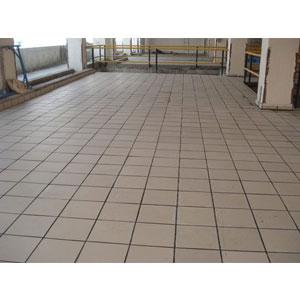

Epoxy Mortar is widely used for Acid Resistant Bricks & Tiles lining works as Bedding & Jointing Mortar for Tanks, Floor, Drain, Foundation, Chemical Reaction Vessels, and Neutralization Pit etc.
It is resistant to Non-Oxidizing Acids, Alkalies, Salt, Detergents, Oils, Greases and some solvents.
90° C (Max.)
Epoxy Mortar consists of Resin, Hardener & Mix no.10 Powder. In order to obtain good working consistency, the average mixing ratio as under
This ratio will slightly vary depending upon the temperature and working conditions.
Prepare small batches of Mortar.
Make sure that all the Mortar is used from the mixing pan before another batch is prepared.
The cement plastered surface shall be slightly rough in line & level , dry & clean, free from dust, dirt, grease, oil etc., maintaining required slope etc. as no slope can be adjusted or altered in Acid proof lining works.
After proper mixing, mortar should be buttered on back and sides of tiles/bricks to be laid. Apply little more and after laying squeeze the excess mortar. If only joints filling are done with epoxy mortar, be sure that full depth of joints is filled with mortar. There should not any air pocket in the joints, During & after completion of the installation, area must be kept dry and free from any other materials, traffic, which can affect setting and curing of epoxy mortar.
Epoxy Mortar is a Self-hardening due to its chemical reaction which occurs when the Resin, Hardner & Quartz Powder are mixed together.
Please ensure that no water shall be spilled over the brick lining work before it completely cured.
Equipment & Hand should be cleaned before Epoxy Mortar begins to set, Soap and water is to be used for cleaning the purpose.
At the time of mixing Or Applying Epoxy mortar wear Protective hand Gloves, Goggles and Mask for protection.
All three components are stored in cool and dry place under the roof until ready to use it original unopened (Sealed) containers.
More details:View company website
Its Free
Verify Now